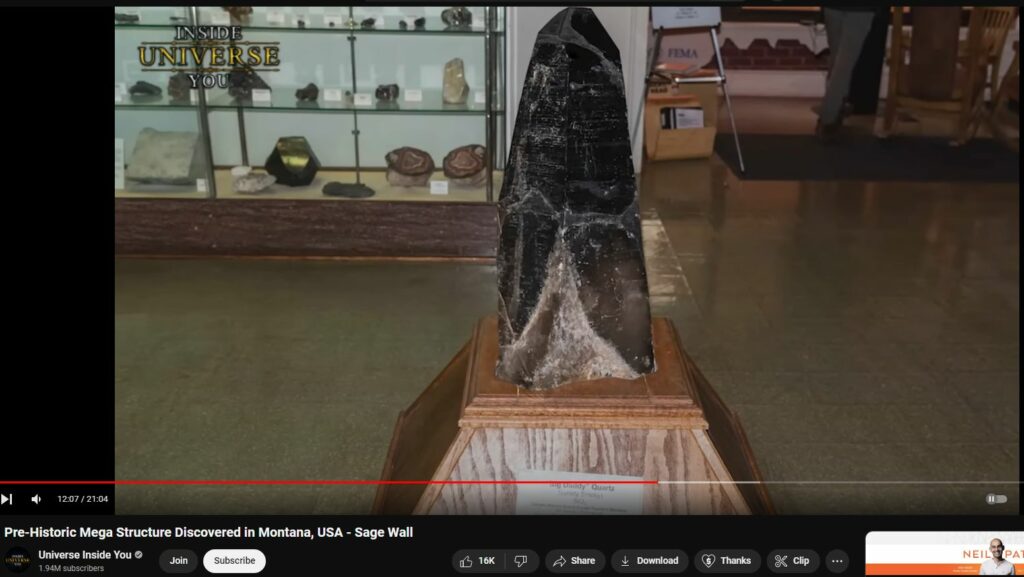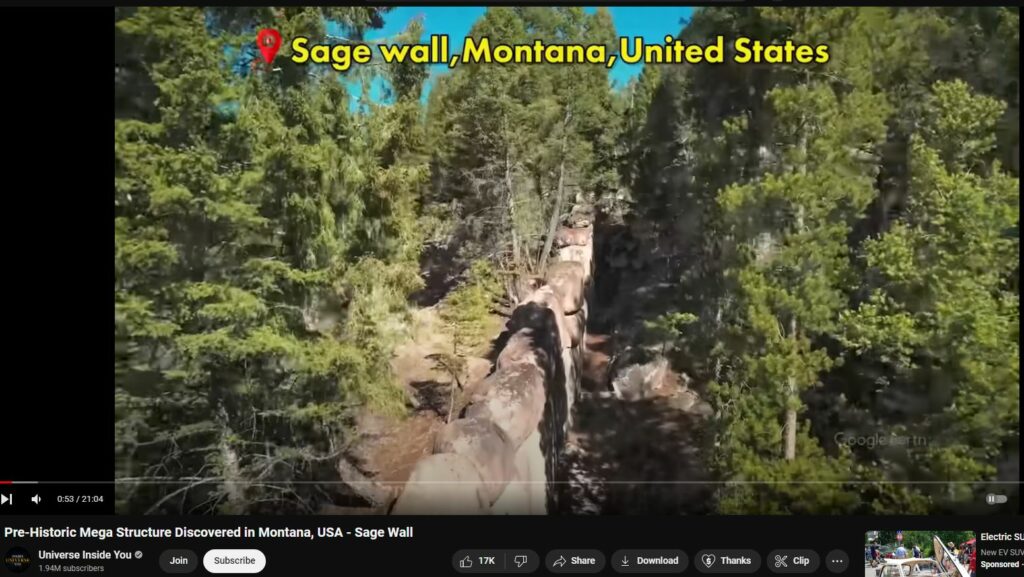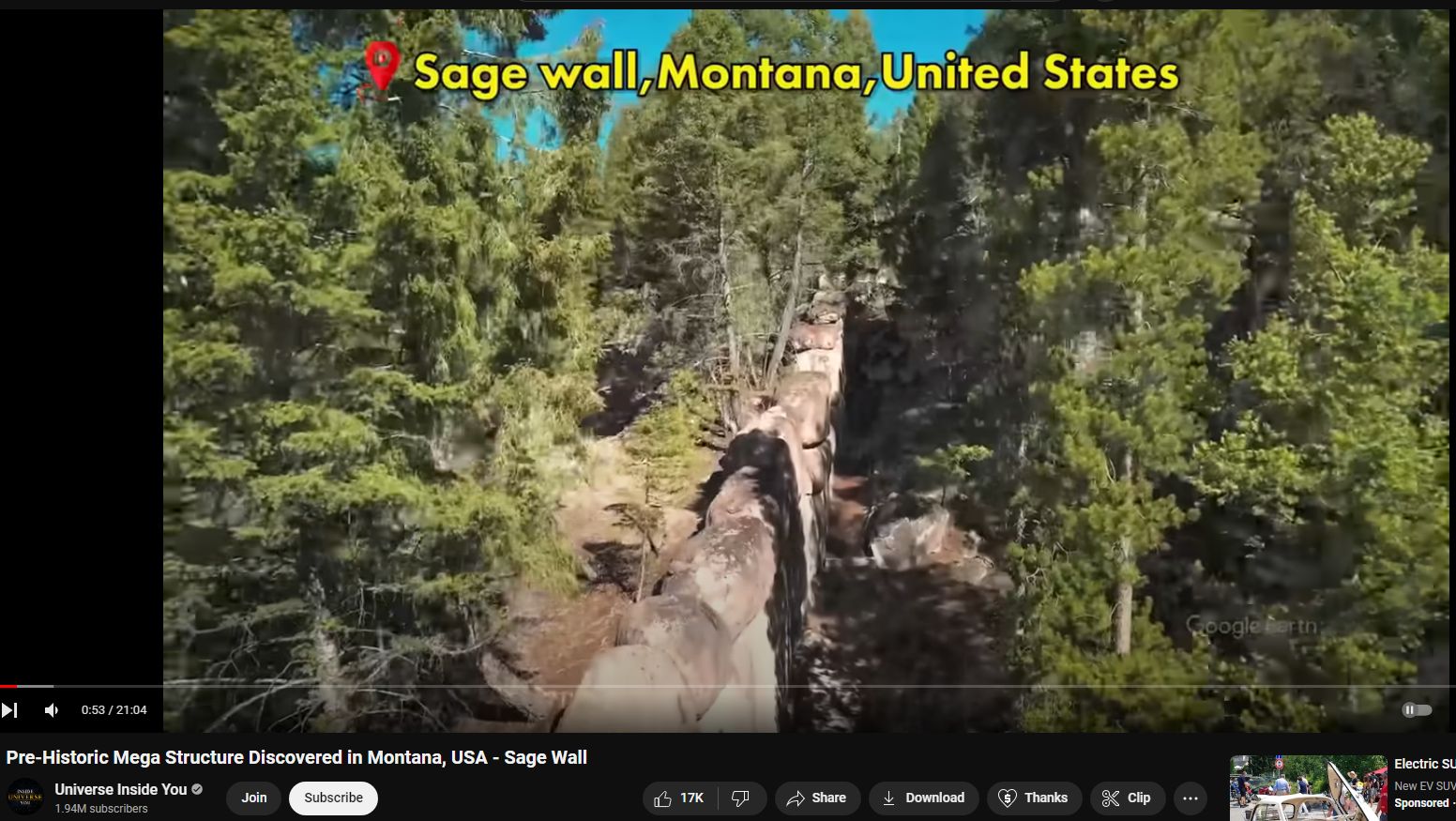Prehistoric Sage Wall in Montana
Largest quartz crystal in Montana was also discovered at site of Sage Wall.

Exploring Sage Wall, Montana: Geopolymer Construction and Alternative Histories
Sage Wall, Montana stands as a mysterious and intriguing structure, attracting both scholars and alternative historians alike. This blog post aims to delve into the possible explanations behind its construction, focusing on the geopolymer theory proposed by Joseph Davidovits, the properties of granite, and the surrounding quarries. Additionally, we’ll explore some of the more unconventional theories and alternative histories presented by YouTubers such as Jon Levi, Michelle Gibson, and Autodidactic.
Geopolymer Construction: The Davidovits Hypothesis
Joseph Davidovits, a renowned materials scientist, introduced the concept of geopolymers—an ancient form of concrete that could have been used in various historical constructions. According to Davidovits, these materials are composed of aluminosilicate minerals that, when mixed with alkaline solutions, form a rock-like substance. This theory has been suggested as an alternative to traditional stone-cutting methods.
Applying this hypothesis to the Sage Wall implies that the ancient builders might have utilized locally available materials to create a similar composite. This could explain the seamless and precise nature of the stonework, which rivals some of the most famous ancient structures worldwide. Investigating the composition of the Sage Wall’s materials and comparing them with known geopolymers could provide more insight into this theory.
Granite and Nearby Quarries
Granite, known for its durability and hardness, is a common material in many ancient constructions. The Sage Wall appears to be composed of this robust stone, which raises questions about the methods used to quarry, transport, and shape such heavy and resistant material.
Exploring the nearby quarries around Sage Wall could shed light on the logistics of its construction. These quarries would have provided the raw materials, and examining the tools and techniques used in these locations might reveal whether ancient builders had the capability to work with granite effectively. Additionally, studying the transportation methods of heavy stones over considerable distances could further clarify the construction process.
Unlikely Explanations and Conspiracy Theories
The mystery of the Sage Wall has also attracted various unconventional theories. Alternative historians and conspiracy theorists propose explanations that often defy mainstream archaeology. For instance, some suggest that advanced ancient civilizations, possibly with lost or hidden technologies, were responsible for the construction of such structures.
Jon Levi, Michelle Gibson, and Autodidactic are prominent YouTubers who explore these alternative histories. Jon Levi often discusses the idea of a reset civilization, where advanced knowledge and technology existed in the past but were lost due to catastrophic events. Michelle Gibson delves into the concept of an ancient worldwide civilization with advanced infrastructure. Autodidactic focuses on challenging the accepted historical timelines and proposing alternative narratives based on architectural anomalies and historical inconsistencies.
These theories, while controversial, open the door to a broader discussion about our understanding of history and the potential for undiscovered knowledge about ancient technologies and civilizations.
Conclusion
The Sage Wall in Montana remains a subject of fascination and debate. Whether it was constructed using geopolymers as proposed by Joseph Davidovits, through traditional stone-working methods, or by some advanced ancient technology, it stands as a testament to human ingenuity and the enduring mysteries of our past. By exploring both conventional and alternative theories, we gain a deeper appreciation for the complexities and possibilities of ancient construction techniques and historical narratives.

